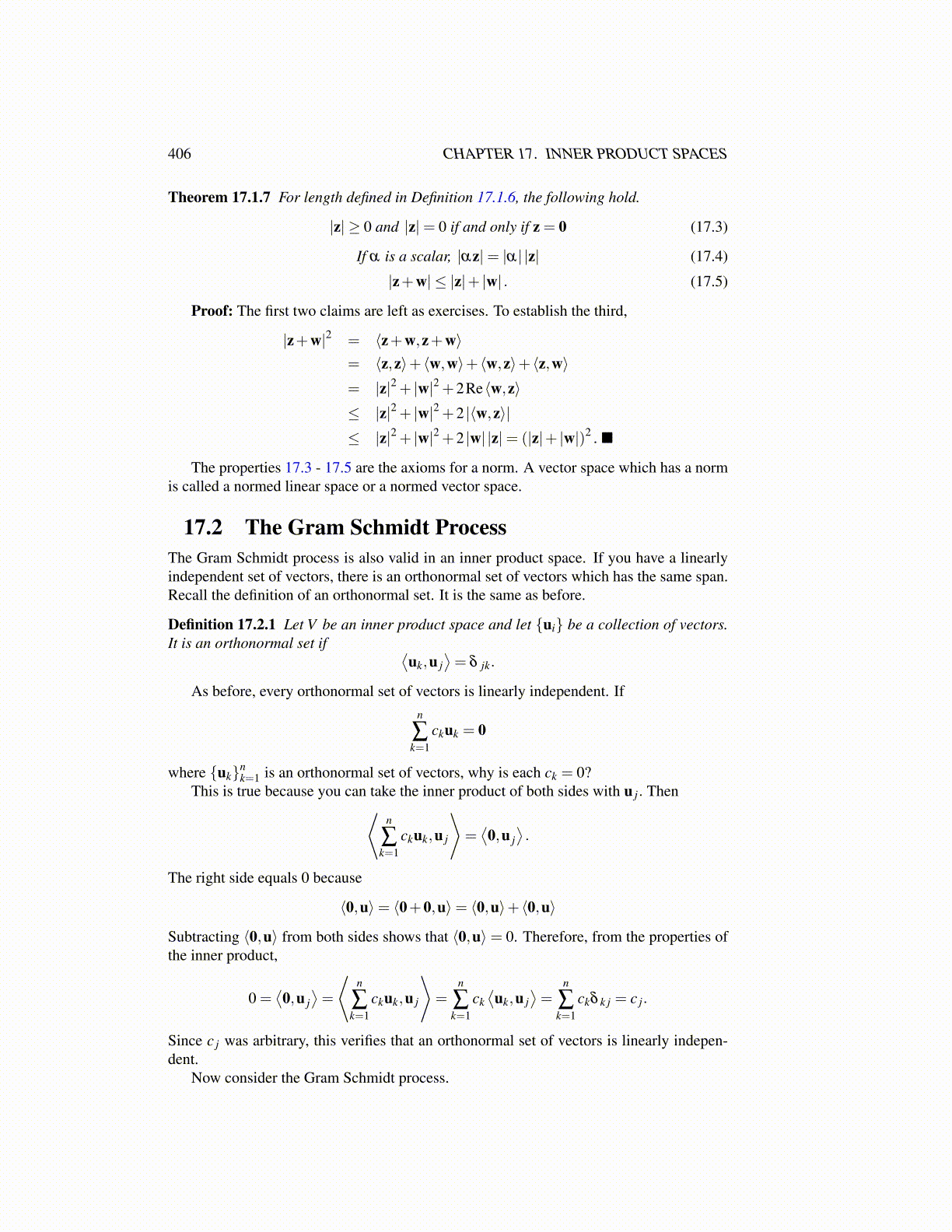
406 CHAPTER 17. INNER PRODUCT SPACES
Theorem 17.1.7 For length defined in Definition 17.1.6, the following hold.
|z| ≥ 0 and |z|= 0 if and only if z = 0 (17.3)
If α is a scalar, |αz|= |α| |z| (17.4)
|z+w| ≤ |z|+ |w| . (17.5)
Proof: The first two claims are left as exercises. To establish the third,
|z+w|2 = ⟨z+w,z+w⟩= ⟨z,z⟩+ ⟨w,w⟩+ ⟨w,z⟩+ ⟨z,w⟩= |z|2 + |w|2 +2Re⟨w,z⟩≤ |z|2 + |w|2 +2 |⟨w,z⟩|≤ |z|2 + |w|2 +2 |w| |z|= (|z|+ |w|)2 . ■
The properties 17.3 - 17.5 are the axioms for a norm. A vector space which has a normis called a normed linear space or a normed vector space.
17.2 The Gram Schmidt ProcessThe Gram Schmidt process is also valid in an inner product space. If you have a linearlyindependent set of vectors, there is an orthonormal set of vectors which has the same span.Recall the definition of an orthonormal set. It is the same as before.
Definition 17.2.1 Let V be an inner product space and let {ui} be a collection of vectors.It is an orthonormal set if ⟨
uk,u j⟩= δ jk.
As before, every orthonormal set of vectors is linearly independent. Ifn
∑k=1
ckuk = 0
where {uk}nk=1 is an orthonormal set of vectors, why is each ck = 0?
This is true because you can take the inner product of both sides with u j. Then⟨n
∑k=1
ckuk,u j
⟩=⟨0,u j
⟩.
The right side equals 0 because
⟨0,u⟩= ⟨0+0,u⟩= ⟨0,u⟩+ ⟨0,u⟩
Subtracting ⟨0,u⟩ from both sides shows that ⟨0,u⟩= 0. Therefore, from the properties ofthe inner product,
0 =⟨0,u j
⟩=
⟨n
∑k=1
ckuk,u j
⟩=
n
∑k=1
ck⟨uk,u j
⟩=
n
∑k=1
ckδ k j = c j.
Since c j was arbitrary, this verifies that an orthonormal set of vectors is linearly indepen-dent.
Now consider the Gram Schmidt process.